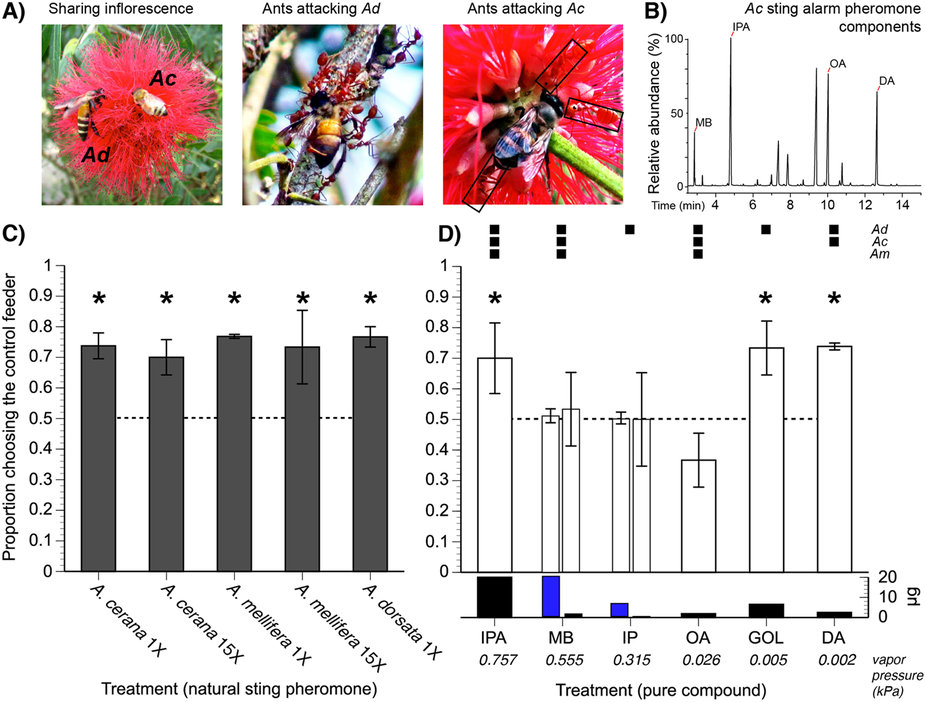Eavesdropping (or public information parasitism) occurs when a signal, a feature that has been selected to convey information, is intercepted by unintended receivers. It is not known if pollinators can eavesdrop upon alarm signals to avoid predators.
Prof. TAN Ken and his team of Xishuangbanna Tropical Botanical Garden (XTBG) tested the hypothesis that pollinators can eavesdrop upon alarm signals and will pay specific attention to the most informative (abundant and persistent) signal components. They used two sympatric bee species, Apis cerana and A. Dorsata, which are found throughout Southeast Asia and share the same floral resources and predators.
The researchers hypothesized that the A. cerana foragers would detect and avoid the alarm pheromones of A. dorsata and A. Mellifera. To determine how volatility influenced eavesdropping, they then tested forager responses to individual compounds. They predicted that A. cerana foragers would exhibit eavesdropping to A. dorsata and A. mellifera alarm pheromones, and would specifically detect and avoid conspicuous individual compounds, defined both by abundance and by decreased volatility.
They found that A. cerana foragers avoided the sting alarm pheromone of its own species and heterospecifics at a food source. A. cerana foragers avoided gamma-octanoic lactone (GOL), a component of A. dorsata alarm pheromone that was not found in A. cerana alarm pheromone, and thereby exhibited classic olfactory eavesdropping. Foragers did not avoid 3-methyl-1-butanol (MB), isopentyl propionate (IP), and octyl acetate (OA). Compared to natural alarm pheromones, synthetic alarm pheromone components did not elicit significantly different avoidance. A. cerana avoidance of natural alarm pheromone did not increase with elevated pheromone levels.
The researchers thus concluded that Apis cerana benefited from avoiding its own alarm pheromone and eavesdropping upon heterospecific alarm pheromones to reduce foraging predation risks. The eavesdropping strategy was shaped by signal conspicuousness (abundance and commonality) and signal persistence (volatility).
The study entitled “Bees eavesdrop upon informative and persistent signal compounds in alarm pheromones” has been published in Scientific Reports.
Contact
TAN Ken, Ph.D Principal Investigator
Key Laboratory of Tropical Forest Ecology, Xishuangbanna Tropical Botanical Garden, Chinese Academy of Sciences, Mengla, Yunnan 666303, China
Tel: 86-871-65227717
Fax: 86-871-65227358
E-mail: kentan@xtbg.ac.cn

Behavioral responses of A. cerana (Ac) to A. dorsata (Ad) and A. mellifera (Am) sting alarm pheromones (Image by WANG Zhengwei) |

